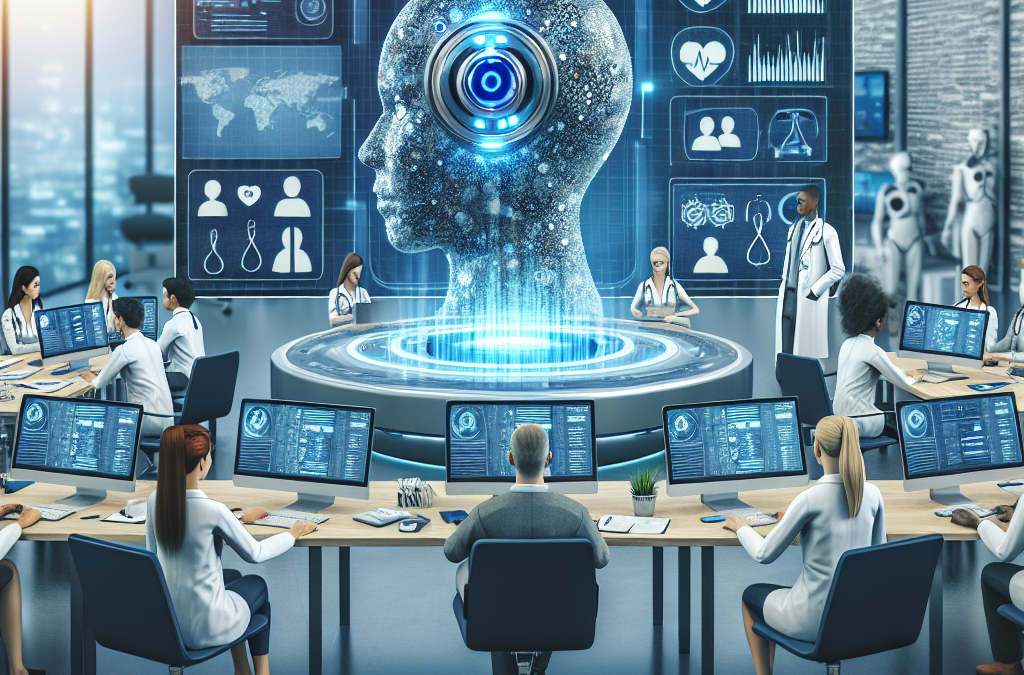In the complex world of healthcare, Human Resources professionals face many unique challenges in managing and enhancing workforce productivity. The advent of intermodal AI offers a groundbreaking alternative to traditional integration techniques, enabling a more dynamic, efficient, and effective coordination within HR departments. This post aims to explore the transformative capabilities of intermodal AI in healthcare HR, illustrating how it surpasses more traditional integration methods in fostering productivity and streamlined operations.
The Limitations of Traditional Integration in HR
Traditional integration in HR typically involves the consolidation of various software systems to manage tasks like payroll, benefits administration, and employee records. While these systems aim to centralize data and functions, they often fall short in several ways. Despite integration efforts, data silos can persist, limiting the real-time analysis and application of data across different HR functions. Additionally, traditional systems may struggle to adapt quickly to changes in healthcare regulations or organizational structures, hindering responsiveness and innovation. Perhaps most importantly, these systems often offer a disjointed user experience, requiring significant training and adaptation by HR staff, which can reduce overall efficiency.
The Advantages of Intermodal AI in Enhancing HR Productivity
Intermodal AI represents a significant leap forward, offering a more holistic and agile approach to managing HR functions. Unlike traditional methods, intermodal AI can analyze and synthesize data from various sources, including text, voice, and behavioral analytics, providing a richer, more nuanced understanding of workforce dynamics.
By leveraging machine learning and natural language processing, intermodal AI can offer predictive insights and recommendations, helping HR professionals make informed decisions about talent management, workforce planning, and employee engagement. These AI platforms are designed with user experience at the forefront, often featuring intuitive interfaces that require minimal training and seamlessly integrate with existing workflows, significantly reducing the learning curve and enhancing productivity.
Unlike traditional systems that may only update periodically, intermodal AI can process and analyze data in real-time, enabling HR professionals to act on the latest information with speed and accuracy. This real-time capability is particularly crucial in the fast-paced healthcare environment where quick decisions can impact patient care and organizational efficiency.
Intermodal AI in Action: Transforming Healthcare HR
The impact of intermodal AI on healthcare HR can be profound, directly influencing several key areas. In recruitment and onboarding, AI can automate the screening of candidates based on a range of criteria, including past experiences and potential for growth, ensuring that only the most suitable candidates are forwarded to human recruiters. During onboarding, AI-driven systems can personalize the process based on the new hire’s role, experience, and learning pace, significantly enhancing early employee experiences.
Employee development and retention also benefit greatly from intermodal AI. Through continuous analysis of employee performance data and feedback, these systems can identify potential areas for development and suggest tailored training programs. This proactive approach not only boosts employee skills but also contributes to higher job satisfaction and retention rates, which are crucial in what is often a high-turnover industry.
In the ever-changing landscape of healthcare, staying compliant with laws and regulations is paramount. Intermodal AI systems can be programmed to stay updated with regulatory changes, automatically adjusting processes and ensuring compliance without manual intervention. This automated compliance management reduces the risk of costly errors and frees up HR professionals to focus on more strategic tasks.
Challenges and Considerations
While the benefits are clear, implementing intermodal AI comes with its challenges. Introducing a new AI system may require significant changes to existing IT infrastructure, which can be both costly and time-consuming. In healthcare, protecting sensitive employee and patient data is crucial, so ensuring that AI systems are secure and comply with data protection regulations is essential.
Perhaps the most significant challenge is cultural adoption. Shifting to an AI-driven approach requires buy-in from all levels of the organization. Training and change management initiatives are vital to facilitate this transition and ensure that employees at all levels understand and embrace the new technology.
The shift from traditional integration to intermodal AI in healthcare HR is not just an upgrade; it’s a transformation. This new approach offers unparalleled improvements in productivity, decision-making, and employee satisfaction. As healthcare organizations continue to navigate complex challenges, embracing intermodal AI could well be the key to a more agile, efficient, and effective HR department. By overcoming the limitations of traditional systems and leveraging the power of real-time data analysis and predictive insights, intermodal AI is poised to revolutionize how healthcare organizations manage their most valuable asset – their people.
Keywords:
Intermodal AI, Healthcare HR, AI Integration, HR Productivity, Employee Engagement, AI in Healthcare, Data Analytics in HR, AI Talent Management, HR Compliance, AI Recruitment.


Recent Comments